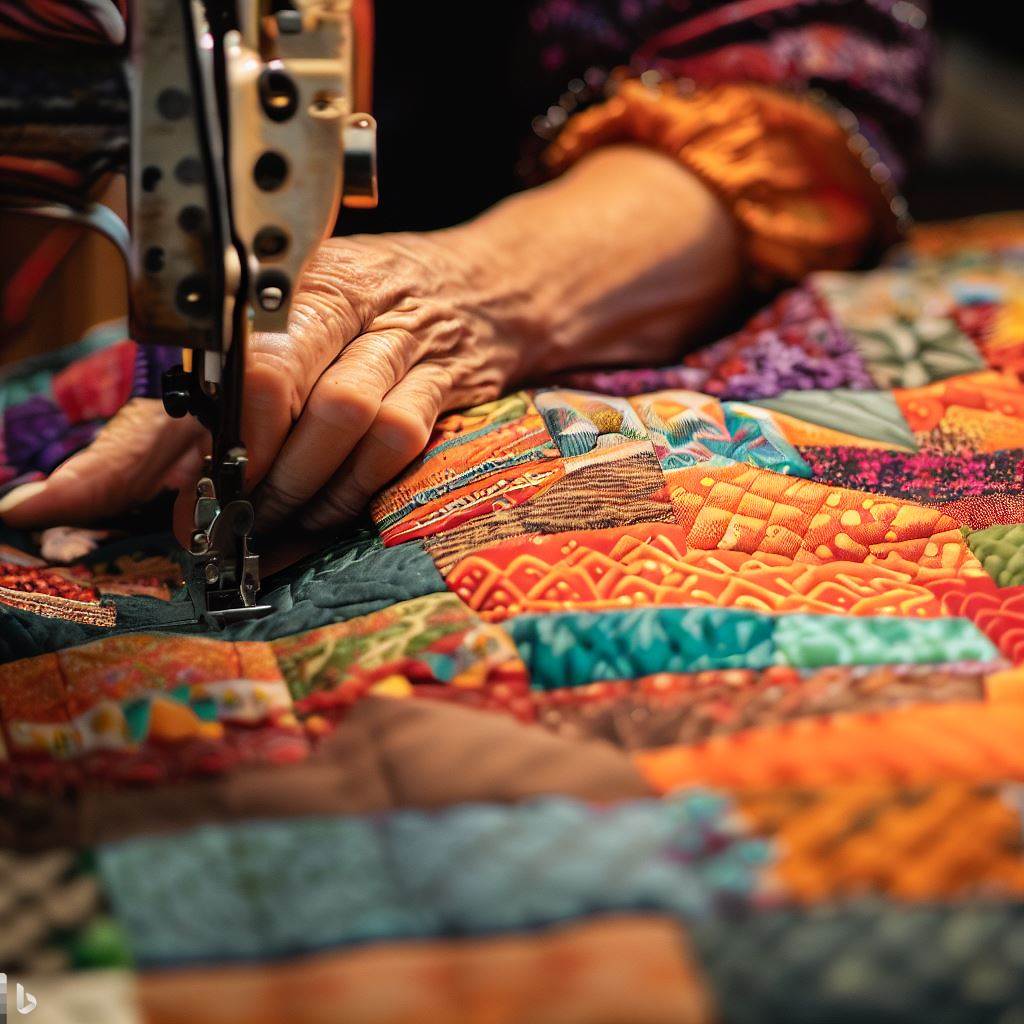Quilting Beyond Borders: Exploring Cultures through Textile Expressions
Quilting traditions worldwide reveal the richness and wisdom of varied cultures. While American and European quilt aesthetics often dominate, seeking out lesser known communities’ textile arts uncovers treasured practices. The universal human impulse for self-expression through fiber manifests uniquely within each group’s values. Appreciating quilting’s diversity expands perspectives. Honor ing marginalized voices conveys respect. When we recognize quilting’s global resonances, our cultural understanding grows.
African and African American Quilting Traditions
Quilting allowed African slaves and their descendants to assert cultural identity and dignity through vivid improvisation.
Resilience Voiced in Color and Shape
Strikingly hued geometric improv quilts with symbolic patterning became a bold visual outlet for oppressed African Americans in the antebellum South. Vibrant quilts spoke resilience.
Spiritual Ciphers
Secretively embedded symbols like the Monkey Wrench or Flying Geese patterns discreetly signaled escape routes and freedom trails along the Underground Railroad. Creativity fueled resistance.
Gee’s Bend Quilts
This isolated Alabama community developed a distinctive improvised style featuring lively color palettes, asymmetric designs, and large-scale geometric shapes that proudly celebrate African roots. Their vision inspires.
Afro-Caribbean Rhythms
Drawing from African heritage, Afro-Caribbean quilters employ vibrant tropical color schemes, repetitive geometric patterning, and symbolic motifs. Cultural identity rings loudly.
Generational bonds
Passing down quilting skills from grandmother to mother to child keeps cherished traditions thriving. Knowledge transmits through generations steadfastly.
Native American Quilting Heritage
Tribes like Navajo and Tlingit used quilting to chronicle cultural narratives and signify identity through intricate textile craftsmanship.
Storytelling Through Symbols
Native quilters encode cultural traditions, legends, and spiritual beliefs within repeating geometric designs that resemble textile patterns unique to their communities. Their imagery preserves tribal history.
Connection to The Land
Patterns echo familiar landscapes like zigzag lightning bolts over desert mesas. Diamonds signify hail. Meandering lines reflect rivers. Tribal lands exist in quilts.
Technical Mastery
Intricate needlework like Rumina velvet appliqué requiring precision demonstrates technical skill passed down by elders. Dexterity honors teachers’ knowledge.
Economic Livelihood
Some tribes like Navajo rely on vibrant textile arts as sustainable livelihoods. Their excellent needlework supports family and culture economically through fair trade.
Ceremonial Gifts
Handing down quilts infuses important rites of passage like weddings with special significance. Their legacy binds generations.
Centuries of Chinese textile Excellence
China’s long textile craftsmanship history appears in brightly hued silk embroidery, auspicious motifs, and exquisite technique within Chinese quilts.
Chinese Knots and Charms
Meticulously hand-stitched Chinese knot motifs convey good fortune. Tiny folded fabric charms traditionally bring prosperity and joy. Symbolism reflects values.
Phoenixes and Dragons
In Chinese culture, the mythical phoenix and dragon represent blessings, power and protection. These celestial creatures frequently accent ornate quilts. Mythology inspires design.
100 Lucky Cranes
A century old bridal tradition involves intricately hand-stitching one hundred tiny origami cranes across a silk wedding quilt to wish the couple endless luck and love. Patience brings blessings.
Silk Love Letters
Silk embroidered wedding quilts often incorporated poetic phrases wishing the couple joy. Layers of sumptuous silk and loving words signal commitment.
Auspicious Colors
Red, yellow, and pink symbolize prosperity and happiness in Chinese culture. Quilts proudly feature these colors to attract positive energy for couples and babies. Hues convey meaning.
Finding Common Ground through Craft
Beyond borders, quilting’s universal language confirms our shared human experience. When we listen to subtle stories woven into stitches worldwide, we connect. Through patient hands, disparate groups discover unity and community. When we see beauty in another culture’s textiles, collective humanity emerges one colorful stitch at a time.
